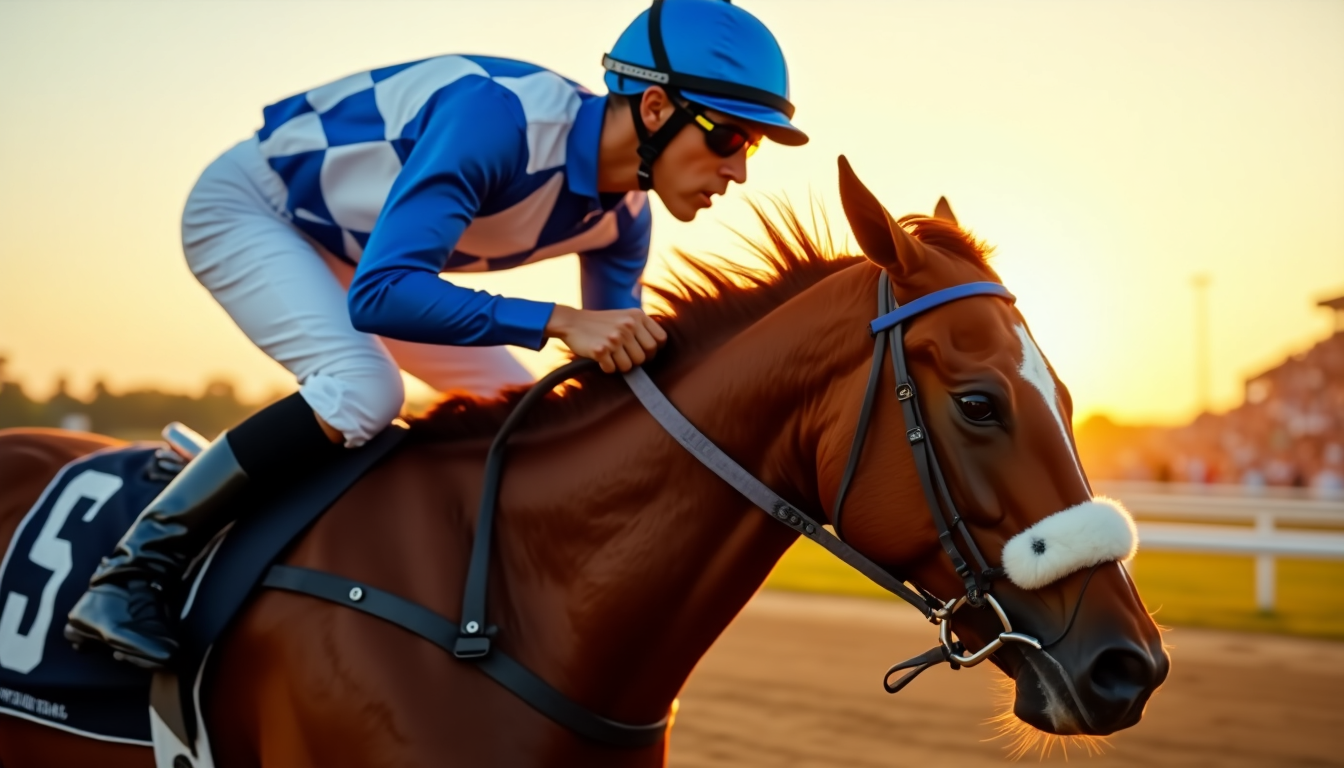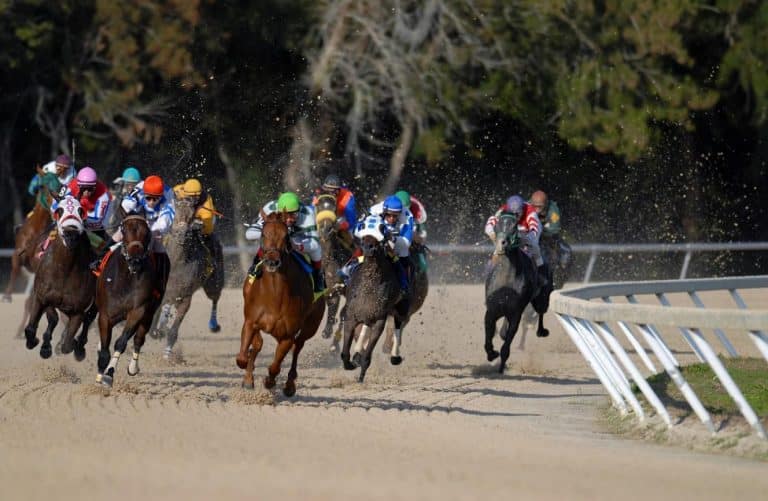When it comes to Jockey Impact on Horse Racing, the physical demands of horse racing are incredible. A jockey’s heart rate reaches 93% of their maximum during a race. These numbers show the intense physical challenge professional jockeys face.
The sort of thing I love about horse racing research is how the numbers tell such a compelling story. Men dominate the profession – they make up all but one of these jockeys in most racing nations. Yet recent studies reveal something surprising. The performance gap between male and female jockeys is tiny. Female jockeys in the UK win 10.7% of their races while their male counterparts clock in at 11.3%.
A jockey’s position and technique affect about 10% of a horse’s performance on race day. This becomes a vital factor when you consider the financial rewards – £50 per race plus 10% of the purse money. These metrics are the foundations of success in horse racing.
This piece will get into the performance metrics behind jockey success. We’ll discover the full potential of optimal racing positions and see how modern technology continues to change the sport.
Key Performance Metrics for Jockey Success
“A jockey who consistently wins at a 25% rate will guide you toward a winning horse one out of four times — no additional handicapping required.” — TwinSpires, Major online horse racing wagering platform
Professional jockeys display remarkable physical abilities throughout races that showcase their elite athletic skills. A close look at their performance gives us fascinating insights into the qualities of successful horse racing jockeys.
Race Completion Rate Analysis
The statistics tell an interesting story about race completion. Jockeys with 11-20 years of experience achieve a 19% win rate, which stands substantially higher than their peers with under 10 years (15%) or over 20 years of experience (16%). The financial rewards paint an even clearer picture. Veteran jockeys who have spent over two decades in the sport earn about GBP 14,800 per start, which soars 66% above what less experienced riders make.
Average Speed Maintenance Stats
Speed management proves crucial to performance success. Jockeys must keep optimal speeds while adapting to different track conditions. The research shows horses slow down by 0.68 meters per second when the track gradient increases by 1%. Horses reach top speeds of 20 meters per second on flat ground, but this drops to 16 meters per second on both 6% inclines and declines.
Position Management Scores
A jockey’s position management plays a vital role in race outcomes. Research reveals that leg muscles make up 51% of total muscular activity during races, while core muscles account for 35% and upper limbs 14%. Seasoned jockeys show better control of their centre of mass, which leads to improved horse performance and lower fall risks.
The physical demands on jockeys reach extreme levels. Their heart rates climb to 93-94% of maximum during races, yet training rides only push them to 81% of maximum. These intense races result in much higher Training Impulse (TRIMP) scores (7.2 ± 1.8) compared to regular training sessions (4.4 ± 1.8).
Recent analysis shows that successful jockey-trainer teams consistently finishing in the top three spots often reveal reliable performance patterns. Track characteristics can favour certain jockey-trainer pairs, which makes track-specific data valuable indicators of performance.
Jockey Position Techniques
The “Martini glass” position, a modern jockey stance, has revolutionized race times. Research shows race completion times improved by 5-7% after riders started using this technique in the late 19th century.
Optimal Racing Stance Research
Jockeys must balance their weight in shortened stirrups and keep their bottom above the saddle in this crouch position. This technique shifts the rider’s weight to their legs instead of the horse’s back. Studies show the two-point seat position adds 13 milliseconds to mid-stance.
Riders who stay balanced in a neutral position move smoothly with their horses. Research shows uneven back or pelvis alignment creates inconsistent saddle pressure. This can make horses uncomfortable and affect their movement. The best performance comes when jockeys keep their pelvis, spine, and head arranged with shoulders, hips, and heels in a straight line.
Impact on Horse Movement
Scientific analysis reveals an interesting pattern – jockeys move opposite to their horses. The rider drops as the horse rises in its stride. This technique helps jockeys maintain a steady level throughout the race. Horses still carry the jockey’s weight but use less energy moving the rider through each stride cycle.
This position demands intense physical effort. Jockeys’ heart rates climb to about 190 beats per minute, just like downhill skiers racing through a slalom course. Their legs flex continuously to adjust to the horse’s movements. They slightly overcompensate to stay stable.
Measurements show horse-jockey movement offsets increase 2.8-4.5% at stance when jockeys lift out of the saddle. This position changes stride patterns too – stride length drops by 14 centimetres on tarmac versus grass surfaces. Knowing how to move and control position effectively predicts how well jockeys will work with their horses during races.
Mental Preparation Strategies
Horse racing success requires exceptional mental strength among other physical abilities. Studies show that all but one of these jockeys face stress, anxiety, or depression during any 12 months. This highlights how significant mental preparation strategies are in the sport.
Pre-race Routines
A consistent pre-race ritual gives jockeys a sense of control and predictability. Most jockeys stay away from media coverage before big races to keep their minds clear. They use visualization techniques to mentally practice race scenarios. The first turn and a clear mindset at the time the barriers open become their main focus.
Stress Management Techniques
Professional jockeys use several methods to handle competitive pressure. They practice deep breathing exercises and mindfulness to stay composed. The Professional Jockeys Association gives round-the-clock access to trained counsellors. These counsellors help with financial uncertainty and workload issues.
Decision Making Under Pressure
Race outcomes often depend on split-second choices. Research shows the brain switches to “stress mode” when mental resources run low. This leads to poor decisions. Jockeys should:
- Keep their focus on the present moment
- Trust what they’ve learned and experienced
- Quickly adjust to race conditions that change
Focus Enhancement Methods
Building mental toughness needs specific approaches. Successful jockeys show their resilience through:
- Regular talks with sports psychologists
- Daily mindfulness practices
- Simple, clear focus points before races
Mental health support is a vital part of racing now. Organizations like Changing Minds provide specialized training to support staff. On top of that, jockeys spend more time on activities outside racing. They focus on hobbies and relationships, which helps prevent burnout and boosts their focus during races.
King’s research points out four main types of stress that affect jockeys: competition challenges, industry pressures, relationship issues, and career uncertainties. Understanding these stress factors helps create targeted mental preparation strategies. This ended up improving both performance and well-being in this demanding sport.
Technology in Modern Horse Racing
“Generally speaking, a win percentage of 15% is respectable, while 20% is strong and 25% is excellent. Win rates of 30% or higher are seen on occasion, though usually not for long periods of time at major tracks.” — TwinSpires, Major online horse racing wagering platform
Racing technology has made remarkable strides, especially when you have tracking systems that give unprecedented insights into jockey and horse performance. These state-of-the-art developments shape training methods, race strategies, and outcome predictions.
Performance Tracking Devices
The TurfTrax Tracking System emerges as a groundbreaking solution that delivers live location data during races. A network of receivers around racecourses processes information from lightweight tags in number cloths. These devices capture vital statistics four times per second and track running order, current speed, and margins between horses.
Horses wear sensors on their legs that monitor biomechanical movements and provide detailed data about stride length, gait patterns, and overall fitness levels. Heart rate monitors track cardiovascular fitness during training sessions with GPS trackers that measure speed and positioning.
Modern tracking devices have evolved to include:
- Biomechanical sensors for movement analysis
- Cardiovascular monitoring systems
- GPS/GNSS RTK quadri-constellation units
- Inertial movement units with accelerometers
Data Analytics for Race Strategy
Advanced analytics platforms now combine vast amounts of race data that help trainers make informed decisions. These systems analyze historical performance records, training sessions, and live race information. Machine learning algorithms process this data and predict race outcomes with increasing accuracy.
Data analytics implementation has produced remarkable results. Predictive models that incorporate paddock observations with traditional metrics achieve a 28.9% success rate in winner prediction. These analytics systems also help identify optimal training regimens and forecast potential health issues.
Data analysis through genetic testing reveals significant information about a horse’s potential abilities, including speed capabilities and endurance levels. Motion capture technology combines with this information to monitor running tendencies and determine injury susceptibility.
AI integration has improved predictive modelling accuracy. AI algorithms analyze patterns in horse performance by factoring in weather conditions, track surfaces, and historical metrics. Trainers receive detailed insights from these systems to prepare race strategies effectively.
Even the best horse racing tipsters can’t go through all of the data available but if you want to save some time it’s a good place to start.
Jockey Impact on Horse Racing – The Conclusion
My analysis of jockey performance in horse racing reveals several factors that shape success in this sport. Research shows that experienced jockeys win by a lot more races. Jockeys with 11-20 years of experience have a remarkable 19% success rate.
The right physical positioning plays a vital role. The “Martini glass” stance has shown a 5-7% improvement in race completion times. Mental preparation is the lifeblood of success since 87% of jockeys face psychological challenges during their careers.
New technology has changed modern horse racing completely. Advanced tracking systems capture vital statistics four times per second. Data analytics platforms help predict race outcomes with up to 28.9% accuracy. These tools, proper mental preparation, and refined positioning techniques are the foundations of success in professional horse racing.
The evidence points to jockey performance depending on physical skill, mental strength, and tech support working together. This knowledge helps current professionals and shapes horse racing’s future as the sport grows with new training methods and innovations.
FAQs
Q1. How much does a jockey’s experience impact their success rate? Experienced jockeys with 11-20 years in the field achieve a 19% win rate, which is notably higher than those with less than 10 years (15%) or over 20 years of experience (16%). Veteran jockeys with over two decades of experience also tend to earn significantly more per start.
Q2. What is the “Martini glass” position in horse racing? The “Martini glass” position, also known as the modern jockey stance, involves the jockey balancing their weight in shortened stirrups with their bottom above the saddle. This technique redistributes the rider’s weight onto their legs instead of directly onto the horse’s back, improving race completion times by 5-7%.
Q3. How do jockeys manage the mental challenges of horse racing? Jockeys use various mental preparation strategies, including pre-race routines, visualization techniques, and stress management methods like deep breathing and mindfulness. Many also consult with sports psychologists and focus on activities outside of racing to reduce burnout risk and enhance focus during competitions.
Q4. What role does technology play in modern horse racing? Technology has significantly advanced horse racing, with performance tracking devices providing real-time data on horse and jockey performance. These include biomechanical sensors, heart rate monitors, and GPS trackers. Advanced data analytics platforms use this information to predict race outcomes and optimize training regimens.
Q5. What are the key physical demands on jockeys during a race? Jockeys experience intense physical demands during races. Their heart rates can reach up to 93-94% of their maximum, significantly higher than during training rides. They must maintain a specific posture that requires constant leg flexing to compensate for the horse’s movements, leading to heart rates of approximately 190 beats per minute during races.



